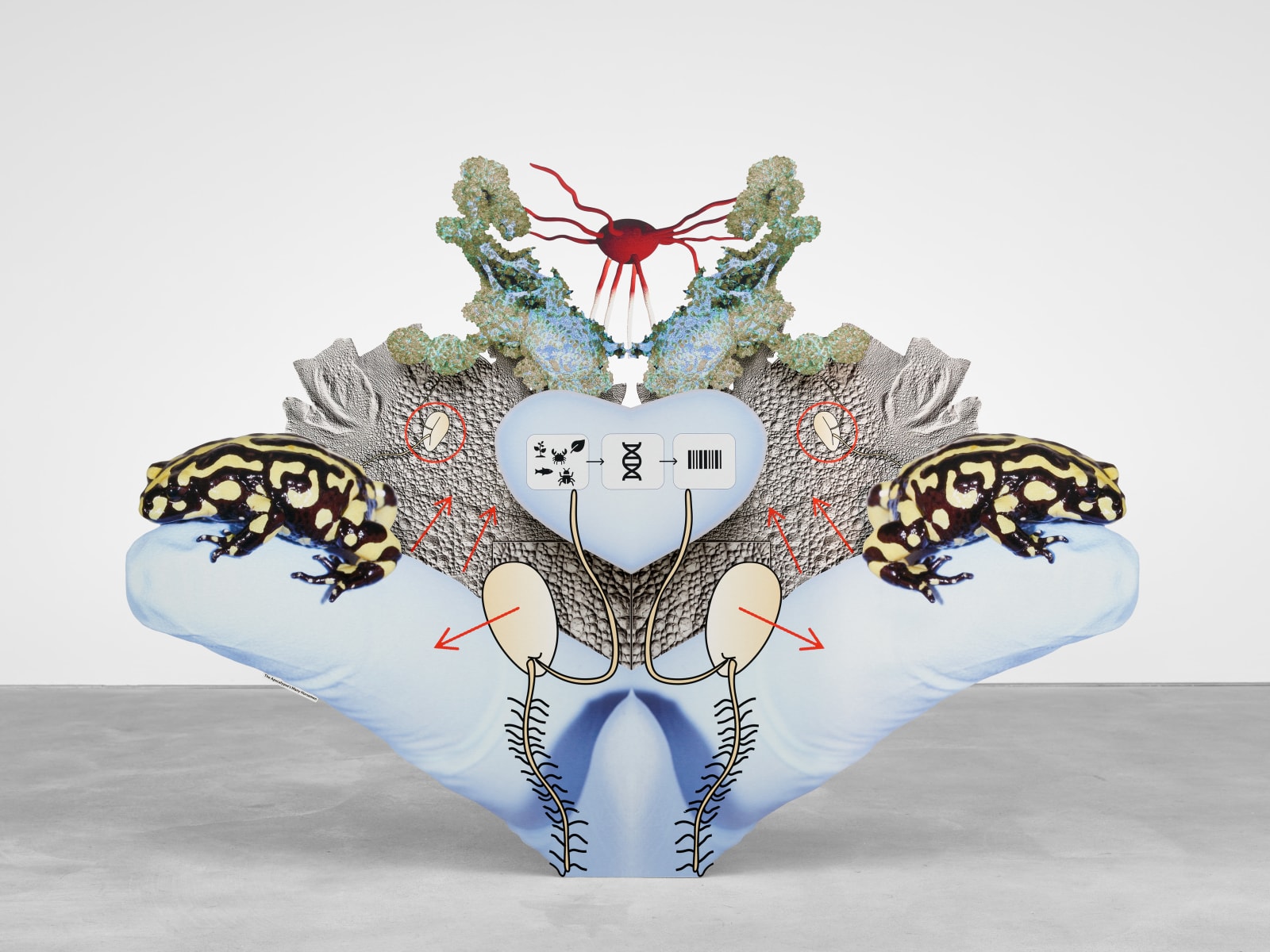Katja Novitskova
Approximation (The Apocalypse's Many Horsemen), 2020
digital print on 3 layers of aluminum cutout display
250 x 180 x 50 cm
98 6/16 x 70 13/16 x 19 10/16 in
98 6/16 x 70 13/16 x 19 10/16 in
Katja Novitskova's Approximation (The Apocalypse's Many Horsemen), 2020 narrates an ecological and social endeavor towards biodiversity, through reference towards the decline of amphibian populations. Emerging from the bisection of the...
Katja Novitskova's Approximation (The Apocalypse's Many Horsemen), 2020 narrates an ecological and social endeavor towards biodiversity, through reference towards the decline of amphibian populations. Emerging from the bisection of the mirrored composition is a frog from an Australian species, nearly extinct, perched on a human hand in a lab glove. Novitskova’s imagery references the global impact of a fungi species, native to South Korea, which has spread across the world and contributed to the decline of amphibians, particularly when combined with habitat loss.
The laboratory elements in this work highlight the role of bioengineering in conservation efforts, the synthetic nature of attempts to save endangered species through gene editing and selective breeding for fungi resistance. This tension is reflected in the work, culminating in a creature that is both natural and artificially sustained.
Novitskova's work also touches on the paradox of conservation priorities, where the decision to save a species often depends on its symbolic significance to a culture or economy. Novitskova created Approximation (The Apocalypse's Many Horsemen) in the midst of the Covid-19 crisis, a time of heightened awareness of the environmental and health impacts of the spread of infectious organisms. Novitskova draws a parallel between the dissemination of communicable diseases and the destruction of biodiversity; also referencing the unique break in the artifice of human immunity towards the ecological devastation we wreak. ‘Approximation (The Apocalypse's Many Horsemen) serves as a monument to biodiversity, illustrating the synthetic and engineered nature of contemporary conservation efforts.
The laboratory elements in this work highlight the role of bioengineering in conservation efforts, the synthetic nature of attempts to save endangered species through gene editing and selective breeding for fungi resistance. This tension is reflected in the work, culminating in a creature that is both natural and artificially sustained.
Novitskova's work also touches on the paradox of conservation priorities, where the decision to save a species often depends on its symbolic significance to a culture or economy. Novitskova created Approximation (The Apocalypse's Many Horsemen) in the midst of the Covid-19 crisis, a time of heightened awareness of the environmental and health impacts of the spread of infectious organisms. Novitskova draws a parallel between the dissemination of communicable diseases and the destruction of biodiversity; also referencing the unique break in the artifice of human immunity towards the ecological devastation we wreak. ‘Approximation (The Apocalypse's Many Horsemen) serves as a monument to biodiversity, illustrating the synthetic and engineered nature of contemporary conservation efforts.




